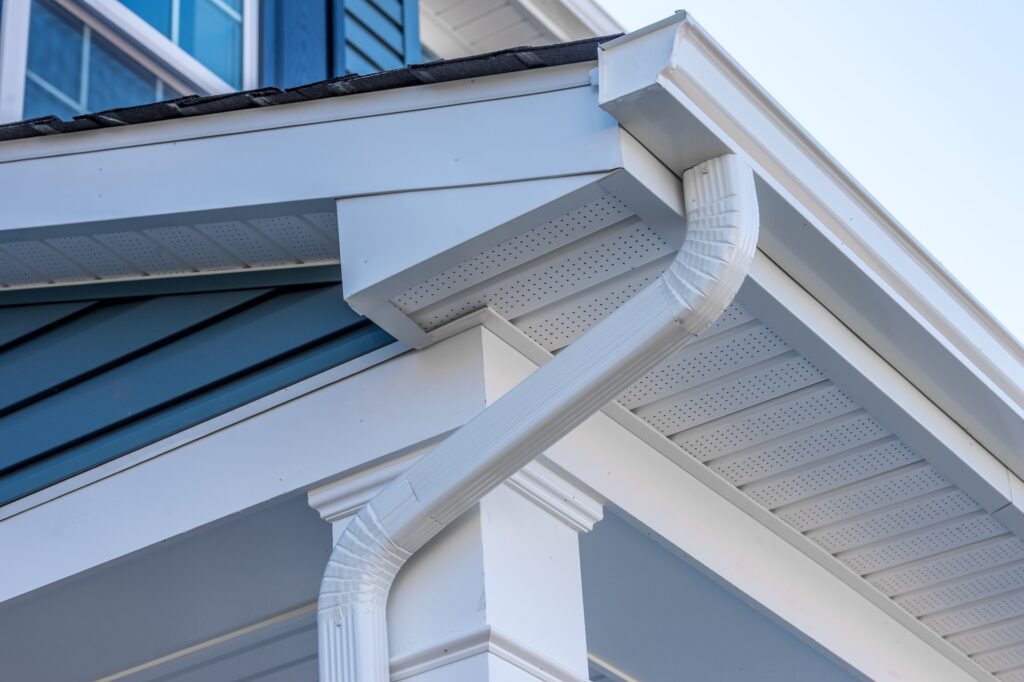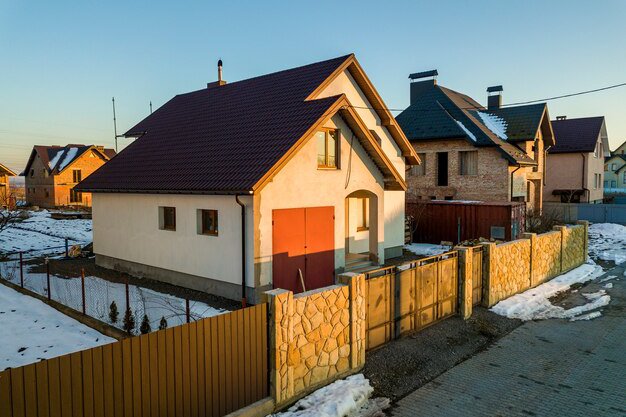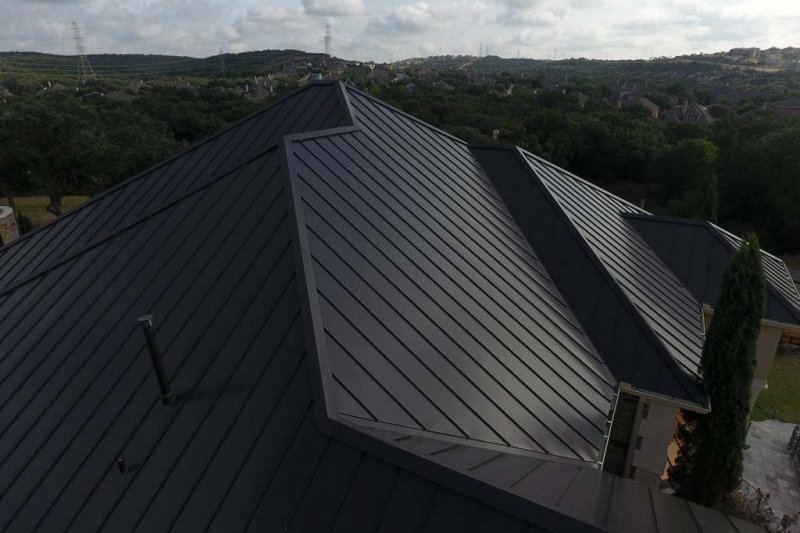Torch Down Roofing vs TPO: Alternatives for Warrenton, Oregon
When considering roofing options for flat or low-slope structures, property owners in coastal areas like Warrenton, Oregon, face unique challenges. These types of roofs require specialized materials and installation techniques to effectively protect against the elements, particularly the significant rainfall and moisture common to the Pacific Northwest. Historically, one common method for covering these roofs has been torch-down roofing. However, modern advancements have introduced compelling alternatives, with Thermoplastic Polyolefin (TPO) roofing emerging as a popular and often preferred choice. Understanding the differences between these systems is crucial for making an informed decision that ensures long-term durability and protection for your property.
Understanding Torch-Down Roofing
Torch-down roofing, also known as modified bitumen roofing, is a system designed specifically for flat or low-slope roofs. It's an evolution of older built-up roofing (BUR) systems, incorporating polymer modification for enhanced flexibility and durability. The material itself is a rolled roofing product consisting of asphalt that has been modified with polymers like APP (Atactic Polypropylene) or SBS (Styrene-Butadiene-Styrene). These modifiers improve the asphalt's performance, making it more resistant to temperature fluctuations and less prone to cracking.
The distinctive feature of torch-down roofing, and the origin of its name, is the installation method. Rolls of modified bitumen are adhered to the roof deck using heat applied by a propane torch. This process melts the underside of the membrane, fusing it to the substrate below or to overlapping sections of the membrane. The system is typically installed in multiple layers, often over a base sheet and insulation, to create a robust, watertight barrier.
Torch-down roofing has been a widely used method for many years, particularly on commercial buildings, garages, and residential additions with low-slope roofs. Its advantages include:
- Proven Track Record: It's a well-established technology with decades of use.
- Durability: The modified asphalt provides good resistance to punctures and tears.
- Relative Affordability: Often has a lower upfront cost compared to some other flat roofing systems.
- Repairability: Damaged sections can often be patched relatively easily using heat or adhesive.
Despite these benefits, the installation process itself presents significant drawbacks, which have led many to explore alternatives.
The Need for Alternatives
While torch-down roofing can provide effective protection, the method of installation is its primary limitation. The use of an open flame during the torching process introduces significant safety risks. Propane torches operate at very high temperatures, and applying this heat to a roof structure can pose a serious fire hazard. This risk is heightened when working around flammable materials, roof penetrations (like vents or pipes), or adjacent structures.
Accidents involving torch-down installation have resulted in property damage and injuries. This inherent risk not only affects the safety of the installers but can also lead to higher insurance premiums for contractors and potentially for property owners.
Furthermore, while modified bitumen is durable, it can still be susceptible to damage from UV rays over time, leading to aging and potential cracking if not properly maintained or coated. The seams, while fused, can also be potential points of failure if the torching is not performed correctly. The weight of the system can also be a consideration for some structures.
These factors, particularly the safety concerns, have driven the development and adoption of alternative flat roofing technologies that offer comparable or superior performance without the need for an open flame.
TPO: A Modern Roofing Solution
Thermoplastic Polyolefin (TPO) roofing has rapidly become one of the most popular choices for flat and low-slope roofing, serving as a leading alternative to systems like torch-down. TPO is a single-ply roofing membrane, meaning it consists of just one layer of material, unlike multi-layer systems. It's a blend of polypropylene and ethylene-propylene rubber, often reinforced with polyester fabric. This composition gives TPO a unique combination of strength, flexibility, and environmental resistance.
One of TPO's most significant advantages is its energy efficiency. TPO membranes are typically manufactured in light colors, most commonly white, gray, or tan. These light colors are highly reflective, meaning they reflect a large portion of the sun's energy away from the building. This significantly reduces heat transfer into the building, leading to lower cooling costs during warmer months. This "cool roof" property makes TPO an excellent choice for improving a building's energy performance and reducing its environmental footprint.
The installation of TPO is fundamentally different from torch-down. Instead of using an open flame, TPO membranes are typically installed using one of three methods:
- Mechanically Attached: The membrane is fastened to the roof deck using screws and plates, with overlapping seams then sealed.
- Fully Adhered: The membrane is glued to the substrate using a specialized adhesive.
- Induction Welded: Fasteners are installed, and the membrane is welded to the fasteners using induction welding technology.
Regardless of the attachment method, the crucial step in TPO installation is the heat welding of the seams. Specialized automatic or hand-held hot-air welders are used to melt the top and bottom layers of the overlapping membrane edges, fusing them together into a single, monolithic layer. When done correctly, these heat-welded seams are incredibly strong and watertight, often considered the strongest part of the roof system. This process eliminates the need for an open flame, significantly enhancing installation safety.
TPO membranes come in various thicknesses (commonly 45, 60, and 80 mil), offering options for different durability requirements and budget considerations. Thicker membranes generally provide greater puncture resistance and a longer lifespan.
Benefits of choosing TPO roofing include:
- Installation Safety: No open flame means significantly reduced fire risk during installation.
- Energy Efficiency: High reflectivity leads to reduced cooling costs and can help meet energy code requirements.
- Durability: Resistant to tears, punctures, and impacts. It also handles thermal expansion and contraction well.
- Seam Strength: Heat-welded seams create a very strong, watertight bond.
- Flexibility: Remains flexible in various temperatures, reducing the risk of cracking.
- Environmental Factors: Often recyclable and can contribute to LEED points.
- Longevity: Properly installed TPO roofs can last 20 years or more, comparable to or exceeding the lifespan of many torch-down systems.
While TPO offers numerous advantages, proper installation is absolutely critical. The strength and watertightness of the system depend entirely on the quality of the seam welding. Poorly welded seams are the most common cause of leaks in TPO roofs. Therefore, selecting an experienced contractor trained in TPO installation is paramount.
Considering TPO for your flat roof project? Understanding the potential costs and benefits upfront is wise.
Comparing Torch-Down and TPO
Here's a comparative look at key factors when evaluating torch-down and TPO roofing systems:
| Feature | Torch-Down Roofing (Modified Bitumen) | TPO Roofing (Thermoplastic Polyolefin) |
|---|---|---|
| Material | Asphalt modified with polymers (APP or SBS) | Blend of polypropylene and ethylene-propylene rubber |
| Installation | Applied in rolls, fused with open flame (torch) or hot asphalt | Single-ply membrane, attached mechanically, adhered, or induction welded; seams are heat-welded |
| Installation Safety | High fire risk due to open flame. | Significantly lower fire risk; uses hot air welding. |
| Seam Integrity | Fused with heat or asphalt; quality depends on application. | Heat-welded seams are very strong when done correctly. |
| Durability | Good resistance to punctures/tears; can become brittle over time. | Excellent resistance to punctures, tears, and UV; remains flexible. |
| Energy Efficiency | Typically dark colors; absorbs heat. | Light colors (white, gray, tan) are highly reflective ("cool roof"). |
| Lifespan | 15-20 years on average, depending on quality and maintenance. | 20+ years is achievable with proper installation and maintenance. |
| Maintenance | Requires regular inspection; can be patched. | Requires regular inspection; seam integrity check is crucial; can be repaired. |
| Cost (Initial) | Often slightly lower upfront cost. | Can be slightly higher initial cost, but lifecycle cost can be lower due to energy savings and lifespan. |
| Repairability | Can be repaired with patches and heat/adhesive. | Can be repaired using hot-air welding and TPO patches. |
| Environmental | Asphalt-based; disposal can be an issue. | Often recyclable; energy efficiency reduces carbon footprint. |
While torch-down has served its purpose, the safety concerns during installation and the energy efficiency benefits of TPO make the latter a very attractive modern alternative for many property owners.
Other Flat Roofing Options
Beyond torch-down and TPO, other materials are used for flat or low-slope roofs, though they may be less common or suited for specific niches:
- EPDM (Ethylene Propylene Diene Monomer): Often called "rubber roofing," EPDM is a durable synthetic rubber membrane. It's typically black, absorbing heat, but is relatively easy to install (often adhered or mechanically fastened, seams are taped or glued) and has a long lifespan.
- PVC (Polyvinyl Chloride): Similar to TPO in being a thermoplastic membrane with heat-welded seams. PVC is known for its durability, resistance to chemicals, and fire resistance. It can be more expensive than TPO.
- Built-Up Roofing (BUR): The traditional "tar and gravel" roof, consisting of multiple layers of asphalt and reinforcing fabrics, topped with gravel. It's durable but heavy, messy to install, and less energy-efficient.
While EPDM and PVC are viable options, TPO has gained significant market share due to its balance of performance, energy efficiency, and cost-effectiveness, positioning it as the primary modern alternative discussed in comparison to older systems like torch-down.
Selecting the Right Roof for Warrenton's Climate
The coastal climate in Warrenton, Oregon, presents specific challenges that influence the best choice for a flat or low-slope roof. High rainfall, persistent moisture, temperature fluctuations, and potential for wind uplift all play a role.
For areas with significant rain, like Warrenton, the integrity of roof seams is paramount. Water pooling on a flat roof will inevitably find any weak point. TPO's heat-welded seams, when correctly installed, create a monolithic, watertight bond that is highly resistant to water penetration, offering a potential advantage over systems where seams are adhered or torched with less consistent results.
Temperature fluctuations, while perhaps less extreme than in some inland climates, still cause roofing materials to expand and contract. Both modified bitumen and TPO are designed to handle this, but the flexibility of TPO, especially in colder temperatures, can contribute to its longevity by reducing stress on the membrane.
Wind uplift is another factor, particularly for properties exposed to coastal breezes. Both mechanically fastened and adhered systems are designed to resist wind uplift, but the chosen installation method for either torch-down or TPO must be appropriate for the local wind load requirements.
Finally, persistent moisture can encourage the growth of moss and algae, which can degrade some roofing materials over time. While both systems can be affected, the smooth surface of TPO can be easier to clean than the granulated surface of some modified bitumen products.
Considering these factors, TPO's robust heat-welded seams and inherent flexibility make it a strong contender for the wet and variable conditions experienced in Warrenton.
The Critical Role of Professional Installation
Choosing the right roofing material is only half the battle; proper installation is absolutely critical for the performance and lifespan of any flat or low-slope roofing system, perhaps even more so than with steep-slope roofs where gravity assists drainage.
For torch-down, incorrect torching can lead to insufficient adhesion, creating weak points where water can enter. Overheating can damage the membrane or, worse, pose an extreme fire risk.
For TPO, the quality of the heat-welded seams is the single most important factor determining the roof's watertightness. If seams are not welded at the correct temperature, speed, or pressure, they can fail, leading to leaks. Proper preparation of the roof deck, correct fastening or adhesion methods, and meticulous flashing details around penetrations and edges are also essential for both systems.
A poorly installed roof, regardless of the material's quality, will likely lead to premature failure, leaks, and costly repairs. This underscores the importance of hiring experienced, qualified roofing professionals who specialize in the specific type of flat roofing system you choose.
Finding Reliable Roofing Services
Undertaking a roofing project, whether it's a repair, replacement, or new installation for a flat or low-slope roof, requires finding trustworthy contractors. The process of getting estimates, evaluating options like torch-down versus TPO, and scheduling the work can feel overwhelming.
For homeowners planning future projects, comparing costs for different materials, or simply needing a general evaluation of their current flat roof's condition without immediate urgency, getting a preliminary estimate can be a valuable first step.
If you're budgeting or exploring options for your flat roof without an immediate emergency, get a quick overview of potential costs.
However, if you're facing an urgent situation, such as an active leak, visible storm damage to a flat roof area, or any scenario requiring prompt professional assessment to prevent further damage, waiting for manual quotes isn't ideal. Connecting directly with a qualified roofer for an inspection or repair is necessary.
When you need a professional to assess a leak, storm damage, or any urgent flat roof issue, connecting with a local expert quickly is key.
Finding pre-vetted, quality local contractors who are experienced in flat roofing systems like torch-down and TPO ensures that the complex installation or repair work is handled correctly, providing peace of mind and protecting your investment.
Frequently Asked Questions About Flat Roofing
Q: How long does a flat roof typically last?
A: The lifespan depends heavily on the material type, quality of installation, maintenance, and climate. Torch-down roofs typically last 15-20 years, while TPO roofs can last 20 years or more with proper care.
Q: Are flat roofs more prone to leaks than sloped roofs?
A: Flat roofs require specialized systems because water drains much slower. While modern flat roofing materials and installation techniques are highly effective, any failure in the membrane or seams can lead to leaks more readily than on a steep slope where water sheds quickly. Proper design (including slight slope to drains) and flawless installation are critical.
Q: What kind of maintenance does a flat roof need?
A: Regular inspections (at least twice a year and after major storms) are crucial. Maintenance includes keeping the roof clear of debris, checking drains and gutters to prevent water pooling, inspecting seams and flashing for any signs of wear or damage, and addressing small issues before they become major problems.
Q: Is TPO suitable for residential flat roofs, like on an addition or garage?
A: Yes, TPO is an excellent choice for residential flat or low-slope areas. Its durability, safety of installation, and energy efficiency are beneficial for homeowners as well as commercial property owners.
Q: How does the coastal climate in Warrenton affect flat roofs?
A: The frequent rain and moisture necessitate a roofing system with extremely reliable seams and resistance to water pooling. Wind can stress the membrane and flashing. Materials like TPO with heat-welded seams and robust attachment methods are often well-suited to withstand these specific challenges.
Making Your Flat Roofing Choice
Deciding on the best roofing system for your flat or low-slope structure involves weighing various factors, including the specific characteristics of each material, the installation process, long-term performance expectations, and how well the system aligns with the climate in areas like Warrenton, Oregon. While torch-down roofing has a history of use, the safety advantages, energy efficiency benefits, and robust seam technology of modern alternatives like TPO make them increasingly appealing options. Ensuring your chosen system is installed by experienced professionals is paramount to achieving a durable, watertight roof that will protect your property for years to come.


